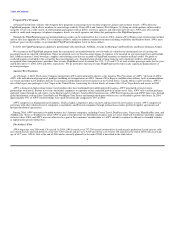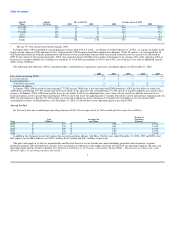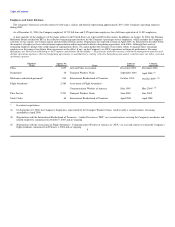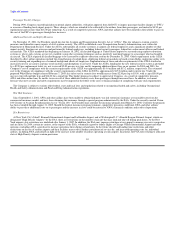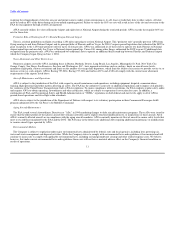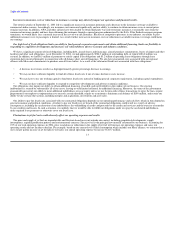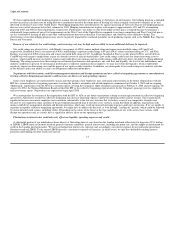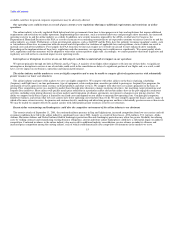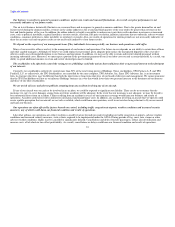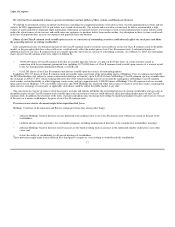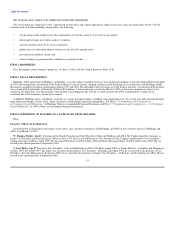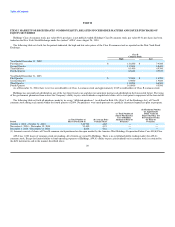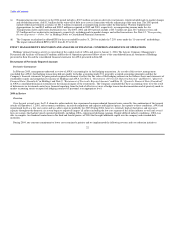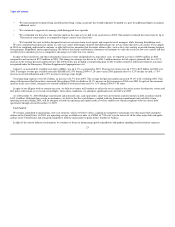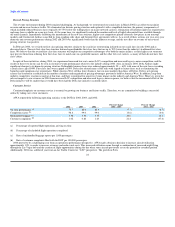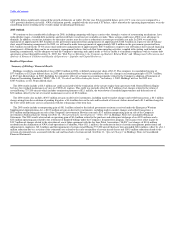US Airways 2004 Annual Report Download - page 19
Download and view the complete annual report
Please find page 19 of the 2004 US Airways annual report below. You can navigate through the pages in the report by either clicking on the pages listed below, or by using the keyword search tool below to find specific information within the annual report.
Table of Contents
Our business is sensitive to general economic conditions, unforeseen events and seasonal fluctuations. As a result, our prior performance is not
necessarily indicative of our future results.
The air travel business historically fluctuates on a seasonal basis and in response to general economic conditions. Due to the greater demand for air and
leisure travel during the summer months, revenues in the airline industry in the second and third quarters of the year tend to be greater than revenues in the
first and fourth quarters of the year. In addition, the airline industry is highly susceptible to unforeseen events that result in declines in revenues or increased
costs, such as political instability, regional hostilities, terrorist attacks, recession, fuel price escalation, inflation, infectious disease outbreaks, adverse weather
conditions, consumer preferences, labor instability or regulatory oversight. Also, our results of operations for interim periods are not necessarily indicative of
those for an entire year and our prior results are not necessarily indicative of our future results.
We depend on the expertise of our management team. If key individuals leave unexpectedly, our business and operations could suffer.
Many of our executive officers are key to the management of our business and operations. Our future success depends on our ability to retain these officers
and other capable managers. Although we believe we could replace key personnel given adequate prior notice, the unexpected departure of key executive
officers could cause substantial disruption to our business and operations. In addition, we may not be able to retain and recruit talented personnel without
incurring substantial costs. Moreover, we must repay a portion of the government guaranteed loan if our labor costs exceed a certain threshold. As a result, our
ability to spend additional amounts to retain and recruit talented personnel is limited.
The stockholders who effectively control the voting power of Holdings could take actions that would favor their own personal interests to the detriment
of our interests.
Currently, two stockholders collectively control more than 50% of the total voting power of Holdings. These stockholders, TPG Partners, L.P. and TPG
Parallel I, L.P, or collectively, the TPG Stockholders, are controlled by the same company, TPG Advisors, Inc. Since TPG Advisors, Inc. is an investment
firm, its strategic objectives may be different than both the short-term or long-term objectives of our board of directors and management. We cannot guarantee
that the TPG Stockholders will not try to influence Holdings' business in a way that would favor their own personal interests to the detriment of our interests
and those of our other stockholders.
We are at risk of losses and adverse publicity stemming from any accident involving any of our aircraft.
If one of our aircraft were to crash or be involved in an accident, we could be exposed to significant tort liability. There can be no assurance that the
insurance we carry to cover damages arising from any future accidents will be adequate. In the event that our insurance is not adequate, we may be forced to
bear substantial losses from an accident. Claims resulting from an accident in excess of our insurance coverage would harm our business and results of
operations. Accidents could also result in unforeseen mechanical and maintenance costs. In addition, any accident involving an aircraft that we operate could
create a public perception that our aircraft are not safe or reliable, which could harm our reputation, result in air travelers being reluctant to fly on our aircraft
and harm our business.
Our operations are often affected by factors beyond our control, including traffic congestion at airports, weather conditions and increased security
measures, any of which could harm our financial condition and results of operations.
Like other airlines, our operations are subject to delays caused by factors beyond our control, including air traffic congestion at airports, adverse weather
conditions and increased security measures, such as those required to be implemented under the ATSA. During periods of fog, snow, rain, storms or other
adverse weather conditions, flights may be cancelled or significantly delayed. Cancellations and delays frustrate passengers, reduce aircraft utilization and
increase costs, all of which in turn affect profitability. As a result, cancellations or delays could harm our financial condition and results of operations.
16


